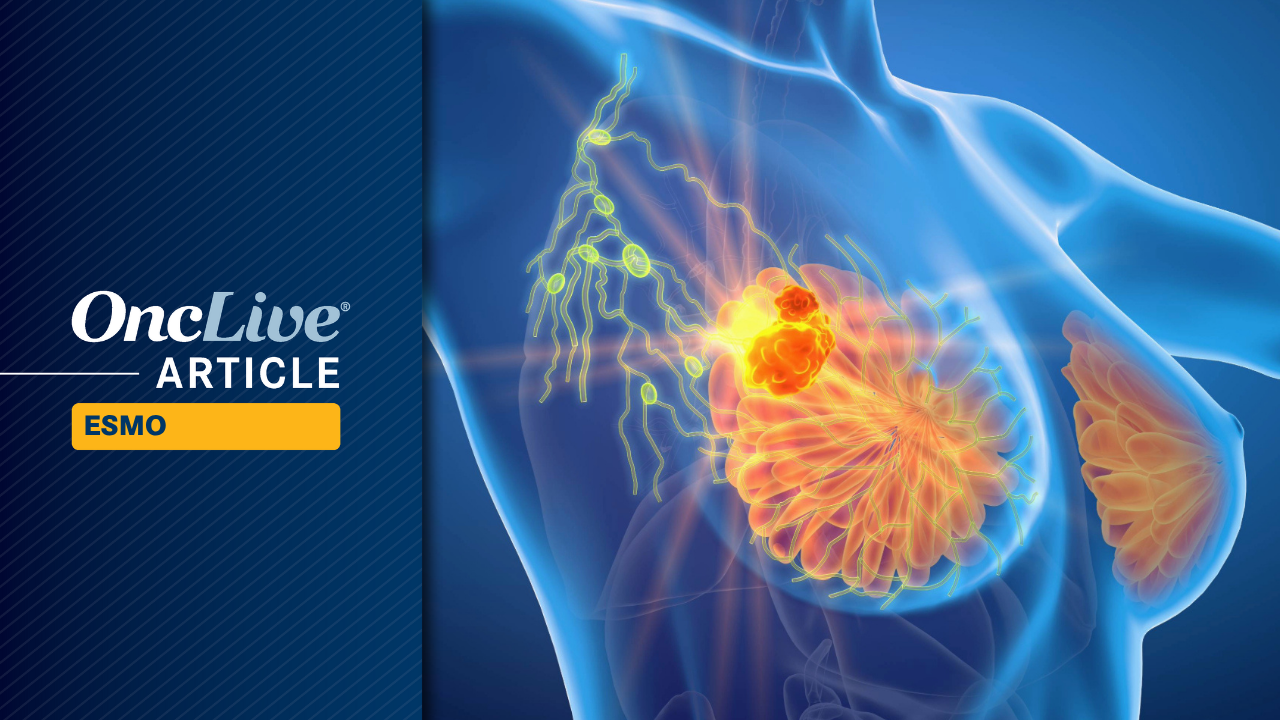Health
T-DXd Shows Significant Survival Benefits Over T-DM1 in Breast Cancer

A recent interim analysis from the phase 3 DESTINY-Breast05 trial has revealed that treatment with fam-trastuzumab deruxtecan-nxki (T-DXd; Enhertu) significantly improves invasive disease-free survival (IDFS) compared to ado-trastuzumab emtansine (T-DM1; Kadcyla) in high-risk patients with HER2-positive primary breast cancer. The findings were presented at the 2025 ESMO Congress and indicate a notable advancement in treatment options for patients with residual invasive disease following neoadjuvant therapy.
Patients receiving T-DXd (n = 818) experienced a 53% reduction in the risk of invasive disease or death compared to those treated with T-DM1 (n = 817). The hazard ratio was reported as 0.47 (95% CI, 0.34-0.66; P < .0001). Furthermore, the three-year IDFS rates stood at 92.4% (95% CI, 89.7%-94.4%) for T-DXd, versus 83.7% (95% CI, 80.2%-86.7%) for T-DM1.
Dr. Charles E. Geyer Jr., a professor of medicine and chief of the Division of Malignant Hematology and Medical Oncology at the University of Pittsburgh Medical Center, emphasized the broad benefits of T-DXd across various patient demographics, stating, “Patients benefited irrespective of age cohorts, region of accrual, hormone receptor status, and more.”
The previous phase 3 KATHERINE trial had shown that T-DM1 improved IDFS and overall survival (OS) compared to trastuzumab. Yet, the results pointed to a gap in effective treatments for patients with advanced locoregional disease or positive nodal status, reinforcing the critical need for enhanced post-neoadjuvant therapies.
Trial Overview and Methodology
The DESTINY-Breast05 trial is a global, multicenter, randomized, open-label study targeting patients with residual invasive disease in the breast and/or axillary lymph nodes after receiving neoadjuvant chemotherapy with HER2-directed therapy. Participants were required to have high-risk disease defined as either inoperable early breast cancer or operable early breast cancer with axillary node-positive disease post-neoadjuvant therapy.
Eligibility criteria included centrally confirmed HER2-positive disease and an ECOG performance status of 0 or 1. The enrolled patients were stratified based on disease extent, type of HER2-targeted therapy received, hormone receptor status, and post-neoadjuvant therapy pathologic nodal status. Random assignment placed patients in either the T-DXd or T-DM1 arm, with both treatments administered intravenously over 14 cycles.
Patients receiving T-DXd were treated at a dosage of 5.4 mg/kg every three weeks, while those on T-DM1 received 3.6 mg/kg under the same schedule. The primary endpoint measured was IDFS, with disease-free survival (DFS) as a key secondary endpoint.
Safety and Efficacy Outcomes
In total, 1,635 patients were randomly assigned to either treatment group, with 806 completing T-DXd treatment and 801 completing T-DM1. Discontinuation rates due to adverse events (AEs) were 27.7% for T-DXd and 23.7% for T-DM1. The median study duration was approximately 30 months for both arms.
Investigators reported lower rates of distant and local recurrences, including central nervous system (CNS) recurrences, in the T-DXd group compared to T-DM1. The three-year DFS rates were 92.3% for T-DXd versus 83.5% for T-DM1. Additionally, T-DXd demonstrated favorable rates in distant recurrence-free interval (DRFI) and brain metastasis-free interval (BMFI), with respective three-year rates of 93.9% and 97.6% for T-DXd compared to 86.1% and 95.1% for T-DM1.
In terms of safety, treatment-emergent adverse events were recorded in nearly all patients: 99.5% in the T-DXd arm and 98.4% in the T-DM1 arm. Serious adverse events were reported at 17.4% for T-DXd and 13.6% for T-DM1. Notably, the most frequently reported adverse events included nausea, constipation, and fatigue.
Dr. Geyer concluded that “Adjuvant T-DXd demonstrated superior efficacy with manageable safety in patients with high-risk, HER2-positive early breast cancer and residual invasive disease after neoadjuvant therapy, which represents a potential new standard of care in this post-neoadjuvant setting.”
The findings from this trial underscore the importance of continued research and innovation in the treatment of HER2-positive breast cancer, offering hope for improved outcomes in this patient population.
-

 Science2 weeks ago
Science2 weeks agoIROS 2025 to Showcase Cutting-Edge Robotics Innovations in China
-

 Politics2 weeks ago
Politics2 weeks agoJudge Considers Dismissal of Chelsea Housing Case Citing AI Flaws
-

 World2 weeks ago
World2 weeks agoBravo Company Veterans Honored with Bronze Medals After 56 Years
-

 Lifestyle2 weeks ago
Lifestyle2 weeks agoStone Island’s Logo Worn by Extremists Sparks Brand Dilemma
-

 Health2 weeks ago
Health2 weeks agoStartup Liberate Bio Secures $31 Million for Next-Gen Therapies
-

 Top Stories2 weeks ago
Top Stories2 weeks agoIndonesia Suspends 27,000 Bank Accounts in Online Gambling Crackdown
-

 Sports2 weeks ago
Sports2 weeks agoMel Kiper Jr. Reveals Top 25 Prospects for 2026 NFL Draft
-

 Health2 weeks ago
Health2 weeks agoTop Hyaluronic Acid Serums for Radiant Skin in 2025
-

 World2 weeks ago
World2 weeks agoHoneywell Predicts Record Demand for Business Jets Over Next Decade
-

 Sports2 weeks ago
Sports2 weeks agoYamamoto’s Mastery Leads Dodgers to 5-1 Victory in NLCS Game 2
-

 Politics2 weeks ago
Politics2 weeks agoNew Jersey Voters Urged to Register Ahead of November Election
-

 Lifestyle2 weeks ago
Lifestyle2 weeks agoMary Morgan Jackson Crowned Little Miss National Peanut Festival 2025









